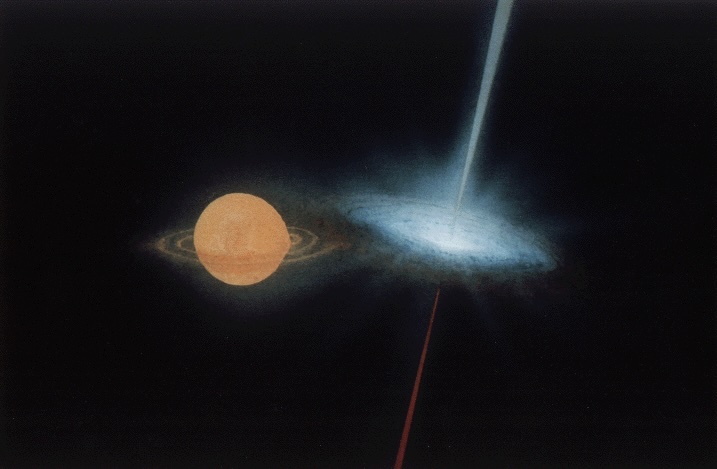What are the Differences Between Quasars and Microquasars?
By Mark Thompson
Quasars are fascinating objects; supermassive black holes that are actively feasting on material from their accretion disks. The result is a jet that can outshine the combined light from the entire galaxy! There are smaller blackholes too that are the result of the death of stars and these also sometimes seem to host accretion disks and jets just like their larger cousins. We call these microquasars and, whilst there are similarities between them, there are differences too.
The term quasar gives a clue to their nature, the term is an abbreviated version of ‘qausi-stellar radio source’ which is exactly what they are. A source of radio energy which seems to present as the pinpoint nature of stars. The first quasar to be discovered was given the rather unimaginative name ‘3C 273’ and it was found in the constellation Virgo. Most objects of this nature tend to have catalogue numbers rather than more common names and in the case of 3C 273 it tells us it is the 273rd object in the 3rd Cambridge Catalogue of Radio Sources.
It was in 1964 that we started to understand the nature of quasars and their incredible luminosity which is the result of the accretion of material onto a supermassive black hole. The accretion process seems to drive twin radio lobes that appear as opposing jets out of their rotational axis. The microquasars seem to be scaled-down versions.
In a paper recently published by J I Katz from the Washington University the differences between the two are explored and, despite the common nature of quasars across the Universe, to date only 19 microquasars have been discovered and there is one key difference emerging.
It seems that the radio lobes are the key. In quasars, a significant propotion of the power appears to come from particle acceleration along their polar jets, driving the energy release from the radio lobes. In microquasars, this seems to be the opposite with thermal emissions from their accretion disk more prominent. In quasars, for some as yet unknown reason, the accretion of material onto the supermassive black holes seems to drive the particle acceleration along the jet rather than thermal radiation yet this is not the case for the smaller microquasars.
Supermassive blackholes that are the powerhouses for quasars seem to offer a more favourable environment for the accretion and acceleration of energetic particles. Katz proposes that a lower electron density in the accretion disk of supermassive black holes allows quasars to accelerate much larger quantities of relativistic particles than their stellar mass equivalents.
Source : Quasars vs. Microquasars
The post What are the Differences Between Quasars and Microquasars? appeared first on Universe Today.

February 19, 2024 at 04:01PM
via Universe Today read more...

Post a Comment